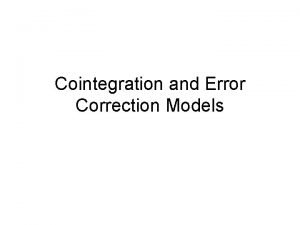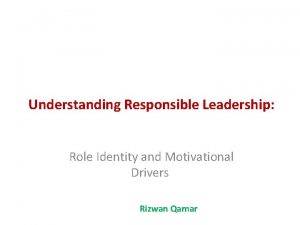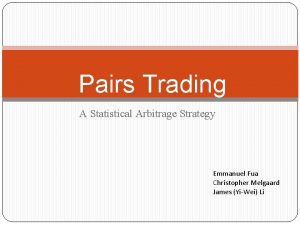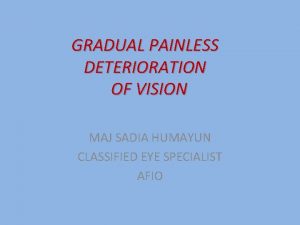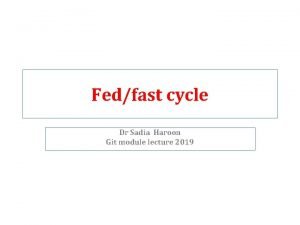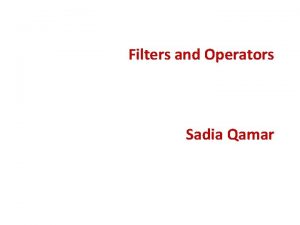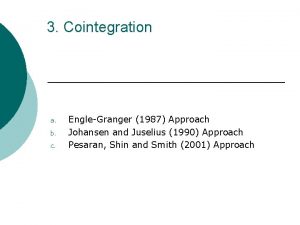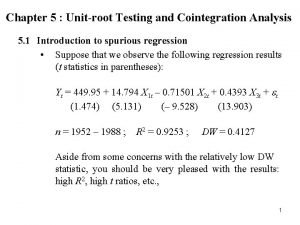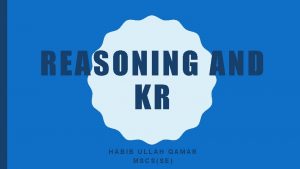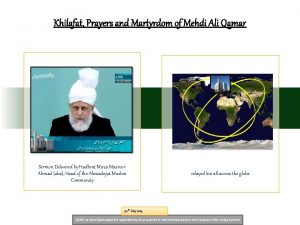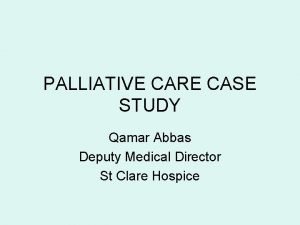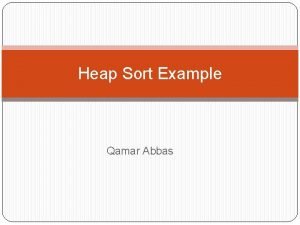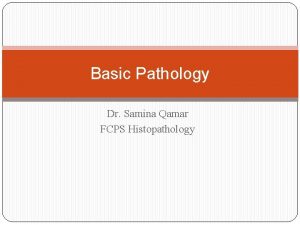Cointegration Analysis and Johansen Approach Sadia Qamar Cointegration









- Slides: 9

Co-integration Analysis and Johansen Approach Sadia Qamar

Co-integration �The concept of co-integration first introduced by Granger (1981) and elaborated further by Engel and Granger (1987) and Johansen in (1988). �Observations are often taken simultaneously on two or more time series. For example in meteorology we might observe temperature, Rainfall and Air pressure at same sequence of time. In economics time series measure income, consumption, GDP at same point of time. For this type of data we have to develop a multivariate time series model

Co-integration �Cointegration means that despite two or more time series follow random walks, a linear combination of them can be stationary. If this is the case, we say that these time series are co-integrated. �Suppose we have 2 series x 1 and x 2 both are non stationary but the linear combination of two variable is stationary than these two variables is said to be co integrated (x 1 -x 2) �Co-integration tests analyze non-stationary time series— processes that have variance and mean that vary over time.

Test for co-integration �Engel-Granger Test �Johansen Test

Engel-Granger Test �In the context of testing for co-integration, the Dickey-Fuller (DF) and augmented Dickey-Fuller (ADF) tests are known as Engle-Granger (EG) and augmented Engle-Granger (AEG) tests, which are now incorporated in several software packages. �Testing whethere is a co-integrated relationship between two time series. �H 0: No cointegration exists �H 1: Cointegration exists �In Eviews make new work file and enter your data than go to quick/group statistics/co-integration test ok

Method of EG test �Step 1: using the ADF test to confirm that variables in the regression are random walks. �Step 2: using OLS to estimate the regression equation: then tests whether the residuals from the above co-integrating regression are stationary. 1. Perform Augmented Dickey-Fuller unit root test on the residual series to see if the residual is stationary. 2. Look at the Durbin-Watson statistic from the above regression: compare DW value with the corresponding critical vale at proper confidence level to decide whether reject or accept the null hypothesis.

Shortcomings of the EG test �The drawback of Engle Granger approach: it can only identify a single equilibrium relationship among the variables. If we have more than two variables in the model, then there is a possibility of having more than one cointegration relationships. �Once we go beyond two time series, we will have to use Johansen methodology to test for cointegrating relationships among multiple variables.

Johansen Test �Johansen (1988) proposed a framework of estimating and testing of vector error correction model (VECM) based on vector auto regressive (VAR) equations with which we can find out how many co-integrating relationships exist among variables �Johansen VECM is more general for testing multiple co-integrating relationships when there are more than two variables. �For k variables, we can have up to k-1 co-integrations

ECM �If two variables Y and X are cointegrated, the relationship between the two can be expressed as an error correction mechanism (ECM). �The ECM postulates that changes in the dependent variable depend on changes in the independent variable and the lagged equilibrium error term, ut-1. �If this error term is zero, there will not be any disequilibrium between the two variables and in that case the long-run relationship will be given by the cointegrating relationship. �But if the equilibrium error term is nonzero, the relationship between the two variables will be out of equilibrium. �For multiple time series, we need to use the vector error correction model (VECM).
